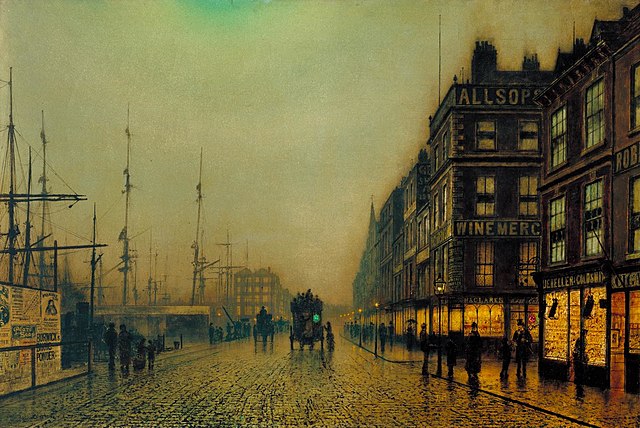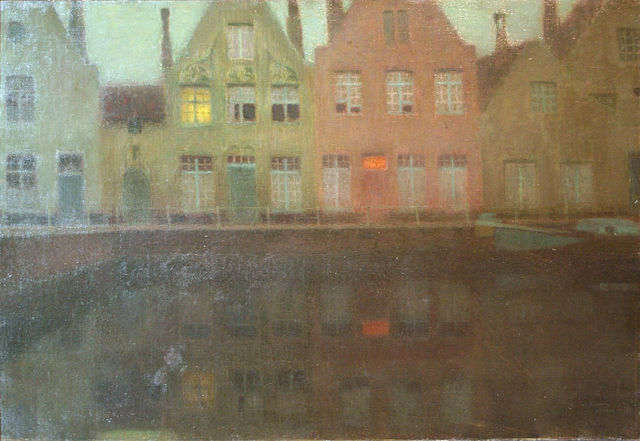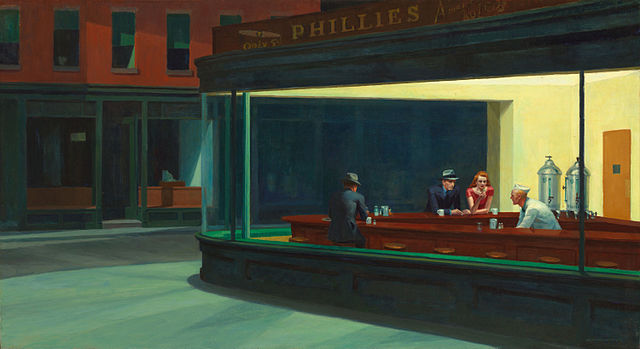The Lighted Window: Evening Walks Remembered, by Peter Davidson, Bodleian Library, 224 pp, £25, ISBN: 978-1851245147
After The Last of the Light, published in 2015, comes The Lighted Window, following a natural progression. Peter Davidson’s preoccupation with evening and nightfall, with the long twilights of the northern summer and the intensely freighted darkness of midwinter, continues apace. He is a connoisseur of the crepuscular, the in-between zone dividing night and day, and all its electrifying implications. He is drawn to strangeness and obscurity, in art, in literature, in known places and in reflective moods. He would strongly dispute Philip Larkin’s “sun destroys / The interest of what’s happening in the shade.” Shade, shadowiness, on the contrary, or dayli’gone – to cite the lovely Ulster term for the last of the light – with its connotations of an evocative indistinctness, is his element, and the source of his most captivating insights.

By focusing here on the lighted window viewed from outside, Davidson expands on a reverie of solitude and introspection betokened near the beginning of his previous book, when “the blue grey evenings of European cities … as the lamps come on in the windows before their curtains are drawn” flood into his mind. The window makes a frame for a range of imagined activities taking place within the lighted room. It opens a way to the social scene as envisaged by Proust (say), by Virginia Woolf, GK Chesterton, Alan Hollinghurst and others, all with their finely tuned narratives of love and loss. And other forms of illumination have their sumptuous effects. “Misty splotches of diffused light” spill on to foggy London pavements in the Sherlock Holmes stories, while an abundance of “nocturnes and nostalgias of Victorian England” keep the Lighted Window author’s senses at full alert. Here is the nineteenth-century Yorkshire painter Atkinson Grimshaw, with his imposing suburban villas behind moonlit garden walls, his depictions of the fading light of autumn afternoons, his evening mood-pieces, Leeds by lamplight and street lights of Liverpool disseminating a subtle glimmer. Here are softly glowing lights in ancient towers, in cathedral closes, in a lonesome cottage by the side of a pinewood. Here, moving into the twentieth century, is Eric Ravilious’s stylish and stylised High Street with its decorative lamp standards and enticing interiors beyond the outer facades. (Davidson’s book is wonderfully illustrated. I keep going back to James McNeill Whistler’s snowy Nocturne in Grey and Gold, to Henri Le Sidaner’s dusky summer night – Nuit Douce – with two sisters dressed in white, to industrial Manchester transfigured in the view of Adolphe de la Valette – among many other visual delights.) Here is Matthew Arnold’s scholar gipsy taking a last look at Oxford from the brow of a nearby hill and turning to observe, “while thick the snowflakes fall, / The line of festal light in Christ-Church hall”. It’s not only the falling snow that forms itself into a heady accumulation.

The Lighted Window opens with an evening stroll through Oxford which conjures up vibrant associations going back over forty years or more. The author’s first experience of the city is condensed into a blur of music, fog and darkness, of narrow streets and magnificent architecture, of gate lanterns and gate lodges looming before his eyes as “islands of lamplight in the ocean of winter night”. Cultural comment, throughout this book, is interspersed with personal recollection. Davidson is a great night walker whose walks are a conduit to magic casements, engendering images both enchanting and – occasionally ‑ unnerving. The mysterious light shining out of the darkness is hospitable to thoughts of a ghostly emanation, whether remembered as a figment of local legend in the past, or dreamt up by an exponent of the uncanny, such as MR James or Walter de la Mare. You cannot tell what may lurk behind the solitary light in an empty tower or a ruined mansion, but its scope for setting off reverberations which chill the blood is unsurpassable.
Transitional places, like the railway waiting room in Walter de la Mare’s story “Crewe”, or the lonely path through fields and woods as daylight diminishes, are fraught with an intangible disquiet. The Lighted Window is attuned to both the luminous and the numinous. All of Peter Davidson’s painters of landscapes and townscapes, poets and tellers of tales, have atmosphere and inspiration at their fingertips – and the author finds much to contemplate and elucidate in a whole array of masterly and idiosyncratic works by artists and authors from Caspar David Friedrich to Sylvia Townsend Warner (but not Charlotte Mew, whose “lamps just lighted down the long dim street” somehow encapsulates a kind of dreamlike urban unease). Hardy and Yeats rub shoulders manfully with Samuel Palmer in these pages, while the scatter of house lights along a granite village street in Sylvia Plath’s poem “Wuthering Heights” carries a desolate charge: “Black stone, black stone.”

The chapter entitled “Winter Cities” takes us to nineteenth century Ghent, to Edinburgh New Town, to Prague, Dresden, and to French village squares embodied in the paintings of Le Sidaner and others. Dramas implicit in the stance of a spectator looking across a moonlit canal, or the flicker of an oil lamp behind a flimsy curtain, are played out in the imagination of the author. Peter Davidson’s elegant and enriching commentary takes shape as an affair of contrasts, of lights glimmering in the darkness, of the close at hand and the far away, of a lantern raised in the hand of an antique traveller in the gloaming, of moonlit frosty fields and lamplight on the rain-slicked cobbles of a city street, of drifting snow and summer-evening irradiation. The sense of a vast country extending beyond the gas station or the rundown rooming house in the night paintings of Edward Hopper, has a counterpart in the intimacy of lamplit or firelit cottage life in Kent or Wiltshire – the latter encompassing the kind of domestic quietude from which the poet John Clare felt himself to be excluded on his nightmare trudge from London to Northamptonshire: “… odd houses on the road began to light up, and show the inside lot very comfortable, and my outside lot very uncomfortable and wretched”.
Winter cities, London nocturnes, northern townscapes … These generate aesthetically significant representations within the boundaries of Peter Davidson’s pungent and particular theme. He brings us some unexpected and enlightening assessments and observations, as his book proceeds on its scholarly and seductive way.
1/2/2022
Patricia Craig’s Kilclief & Other Essays is published by Irish Pages and was reviewed by Eve Patten in the September 2021 issue of the Dublin Review of Books.
Images: Atkinson Grimshaw’s Liverpool Quay by Moonlight; Henri Le Sidaner’s Le quai; Edward Hopper’s Nighthawks



